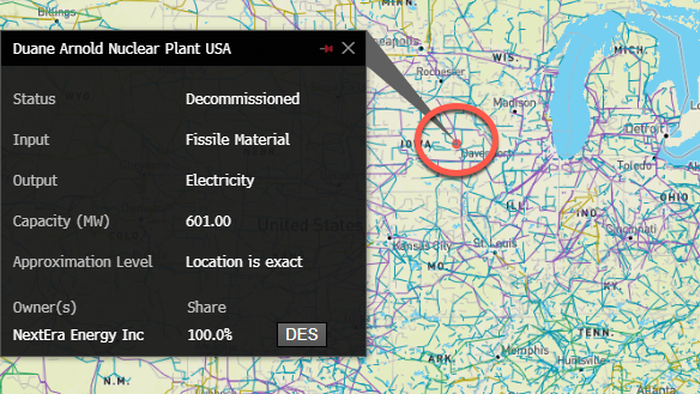The nuclear energy sector is experiencing a notable revival, marked by several significant developments aimed at reinvigorating dormant plants and integrating advanced technologies. Recently, the Biden administration announced a $1.5 billion loan to support the revival of Holtec’s Palisades nuclear plant in Michigan, amidst burgeoning interest from major tech companies, including Amazon, Microsoft, and Google, in tapping into the nuclear industry for what is being termed the “next AI trade.” These movements suggest a renewed commitment to nuclear energy as essential to future energy strategies. This trend is emblematic of a broader push towards sustainable energy sources and aligns with governmental goals to achieve a cleaner energy grid.
NextEra Energy, one of the largest energy companies in the United States, hinted at the potential restart of the Duane Arnold Energy Center (DAEC) in Iowa, further suggesting a shift in how nuclear energy is perceived. The CEO, John Ketchum, pointed out the economic viability of breathing new life into the dormant 600-megawatt facility, which has been out of operation since August 2020 due to weather-related damage. Ketchum emphasized the increasing demand for energy generation nationwide, projecting the need for 900 gigawatts of new generation by 2040 and underscoring the important role nuclear power can play in meeting this demand.
However, analysts are cautious about the feasibility of restarting the DAEC. Jefferies analyst Dumoulin Smith expressed concerns about the practical challenges associated with the plant’s damaged infrastructure, coupled with robust regional competition from wind generation. The uneconomical nature of past repairs suggests that next steps for DAEC will require substantial investment and strategic planning. While there may be potential partnerships with significant corporate players, NextEra Energy needs to navigate these hurdles carefully to ensure the plant’s viability in the current energy landscape.
Rebecca Kujawa, President of NextEra Energy, indicated that overcoming these challenges is worthwhile, as evidenced by preliminary interest from major corporations seeking stable and large-scale energy solutions. The call for energy that aligns with heavy consumer needs hints at significant economic stakes in the energy landscape. In many ways, such collaborations and the growing demand for nuclear energy reflect a broader societal shift towards embracing sustainable and reliable energy sources capable of supporting industrial and technological advancements.
The revitalization of nuclear energy in the context of the “Next AI Trade” also highlights the potential investment opportunities associated with this growing sector. The integration of AI technologies and innovative energy solutions may enhance the efficiency and reliability of nuclear power, creating a fertile ground for new business models and economic initiatives. The confluence of government support, corporate investment, and technological advancements presents an optimistic outlook for the atomic sector as it seeks to position itself as a fundamental pillar in the evolution of America’s energy policies.
In hindsight, the evolution of the nuclear theme suggests a much broader campaign to prioritize clean energy solutions, initiated by a series of strategic investments and industry collaborations. The groundwork laid back in December 2020, which discussed investing in uranium amid a predicted shift towards environmental, social, and governance (ESG)-focused industries, resonates strongly with current trends. The revitalization of aging nuclear sites like the Duane Arnold Energy Center demonstrates a tangible connection between historical industry trends and emerging opportunities, paving the way for a sustainable energy future. Thus, as the narrative around nuclear power gains momentum, expected advancements will increasingly highlight its critical role in addressing the looming energy demands of the coming decades.

